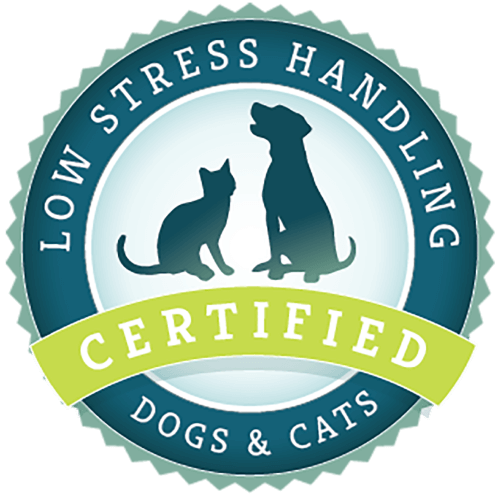What article are you looking for?
Category: Veterinary Professional
How to Safely Transfer a Small Dog from Person-to-Person
Have you ever had a client walk in with their little land-shark of a Chihuahua or Toy Poodle in their arms and you needed to examine it or carry it and you know you won’t be able to get near it once the owner puts it on the table or floor? Or you have a little, bitey dog in a shelter, kennel, or hospital setting you are carrying—because somehow you’ve already made friends with him—and the safest way for you to get him to be handled or transported by someone else is by handing him off to them? In that
Why You Don’t Have an “Operant Dog”
As I watched the video my friend sent me, I saw a reactive dog, named Frankie, lying down in front of his human. The owner was trying to reward quiet, calm behavior while other dogs were far away. Frankie fidgets and keeps moving, gets up and then lies back down, but he’s focused on his owner much of the time. The problem? The owner’s timing of rewards is way too slow to effectively reward a calm down-stay. It’s like the owner is moving at the speed of The Lawrence Welk Show when the speed the dog wants is along the
Are Head Collars on Dogs Dangerous or Safe? It’s All About Technique!
Every once in a while, when I’m doing a seminar for dog trainers, someone will ask, “Are head collars such as Gentle Leaders, Haltis and Snootloops safe for dogs to wear? Can’t a dog hurt its neck?” It’s a pretty simple question, but what some trainers really mean is, “Head collars are bad because I’ve heard they cause injury. How could you possibly use them? Dogs will run to the end and break their necks.” Or “I used one but my dog just pawed at it and didn’t like it.” Or, “I have no control with a head collar when
Dealing with Difficult Dogs at the Vet: 5 Tips That Don’t Involve Food or Training Time
Veterinarians, shelter workers, and other professionals who work with dogs on a daily basis are always asking me, “If I’m dealing with a dog who can’t have treats because he’s having a procedure later in the day or because he’s not hungry, what can I do to get him to be more cooperative or to behave better?” Creating a Relaxing Environment Well, because the main reason dogs are anxious and uncooperative in the veterinary hospital and shelter situation is fear, my answer is, “It really would be helpful if you avoid scaring the poop out of the dog first.” By that, I
Help, My Dog Bites! How to Deal with Dogs Who Bite
This is the overall approach to the fearful or reactive dog in a nutshell. It’s all about addressing the dog’s overall ability to look to you for guidance, and your ability to be aware of his emotional state and to reward desired behaviors and remove rewards for unwanted behaviors.
Medical Conditions in Aging Pets
Diseases of Aging Dogs and Cats A few years ago at a family gathering, my aunt, who had just finished telling one of her famous cat stories, proclaimed, “ All of my cats over the last 25 years have gotten kidney disease. There must be something in the water.” Now, a regular cat enthusiast off the street may have been swayed by her proof; however, as her relative and as a veterinarian, I knew she had left out a vital bit of information—that all of her cats had lived to at least 13 years of age. Realistically even if your

Low Stress Handling® Silver-Level Certification
Individual Certification at this level demonstrates to clients and employers the individual’s dedicated interest in Low Stress Handling®. Hospital Certification at this level demonstrates to clients and staff the hospital’s commitment to appropriately training staff in Low Stress Handling® methods.
Learn More
